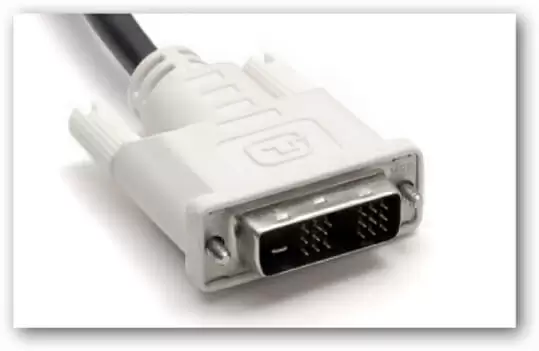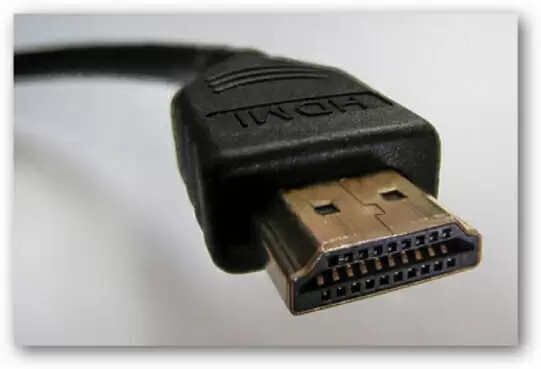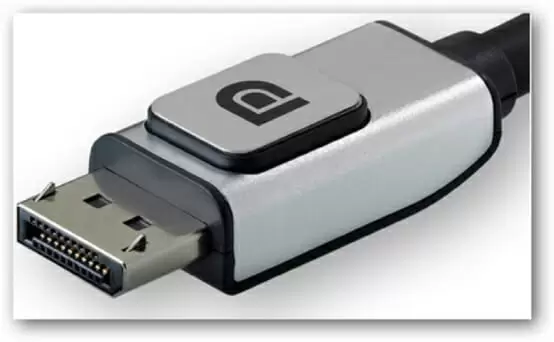Most recent graphics cards and computer monitors offer both a DVI and an HDMI port. The question is obvious: which port should I use?
A few years ago, everything seemed to be simpler. You simply walked into a store, bought a monitor and used the cable that came with it. Nowadays, some monitors don’t even come with a cable.
If you’re expected to buy a cable to connect your computer to your monitor, you’ll want to get your money’s worth. So you need to know which cable to buy and which port to use. Even though you might be inclined to buy an HDMI cable due to its versatility (you can also use it with your TV), it might not be the better option.
To understand which port is the better one, we first need to understand the differences between HDMI and DVI.
Why HDMI or DVI at All? Why Not Use VGA or Composite Video?
First of all, if you have a semi-recent monitor you won’t have a VGA port.
Composite Video never was an actual option for computer screens. Sure, it worked great with your old CRT TV, but that was it.
If by any chance your monitor accepts VGA, you shouldn’t really use it either.
It transmits analog signal, which, again, worked great on older monitors, but isn’t exactly preferable when it comes to current monitors.
What’s The Difference Between HDMI and DVI?
Although you might think that HDMI and DVI are the two main digital connectors, you are mistaken.
There’s a third one: DisplayPort. So, things start to get even more confusing. Now you don’t have to choose between HDMI and DVI, now you need to factor in DisplayPort.
But it gets even more complicated — these ports often come in “mini” and “micro” versions as well.
To understand the differences between each of the video cables, we need to know them in depth. So, let’s get started.
DVI
DVI can be seen as the digital successor to VGA. You can find a DVI port in almost every recent desktop monitor. Graphics cards also commonly have a DVI port.
DVI has up to 24 pins and supports both analog and digital signal, with a maximum resolution of 1920×1200. If you have a dual-link DVI connector you’ll be able to have a max resolution of 2560×1600.
The number of pins on a DVI port, or cable, is dependent on the maximum resolution the device supports. A connector with every pin available can support the largest resolution. This is something you need to factor in when buying a cable. You need to make sure that your port has enough pins for you to plug the cable in to.
One of the biggest issues with DVI is that it doesn’t support HDCP. This means that you might not be able to play Blu-ray and some other high definition content. Another disadvantage is that DVI doesn’t output audio.
Small digital converters allow you to convert your DVI to an HDMI converter. However, since DVI doesn’t support audio, you’ll need a separate cable just for audio output if you’re connecting to an HDMI port.
On the plus side, the ease of converting DVI to HDMI (and it works on both ends), makes DVI very versatile. You can also convert DVI to VGA and vice-versa, meaning that you can plug your old VGA monitor to a device that only outputs DVI.
HDMI
HDMI is the go-to connection when it comes to TVs and every device that connects to a TV. HDMI is easier to use than DVI because you don’t have to make sure that the pins line-up — just plug and play, much like USB.
HDMI’s big advantage is its ability to stream both audio and video in the same connection, supporting up to a 1920×1200 resolution and 8 channel audio.
HDMI also supports HDCP encryption and has become the standard when it comes to digital cables.
DisplayPort
Laptops and some newer GPUs have started including this newish adapter, called DisplayPort. It’s smaller port size makes it the logical choice when it comes to choosing what port to include on a small-form device.
Although DisplayPort was designed as VGA and DVI’s connector, it was seemingly forgotten for what it was supposed to replace.
It’s similar to HDMI as it’s able to stream audio and video on a single connection, although at a (not much) smaller resolution: 1920×1080.
Like HDMI, DisplayPort also supports HDCP and is compatible with a DisplayPort to HDMI or to DVI converter. The main problem with DisplayPort is that most monitors don’t support it and you’ll be forced to use a converter.
Should You Buy an Expensive Cable?
When you walk in to an electronics store and tell an employee you’re looking for a cable, he’ll immediately try to sell you the most expensive one. He’ll talk about how much better the connection will be, and that it will last forever, probably even mentioning that the image will be much crisper.
Don’t fall for it. This used to make sense back when signal was analog. A better cable would reproduce a better signal. Digital doesn’t care for the type of cable — a cable is a cable.
A standard HDMI cable can reliable transmit signal up to 49’. If you’re looking for a longer connection, there are specific cables for that. Otherwise, just buy the cheapest cable you can find.
Which Cable is The Best Then?
After all is said and done, it depends. For most purposes we recommend HDMI. It’s the default connector on almost every device, and eliminates the need for a dedicated audio cable.
However, if you’re already using aa DVI or a VGA cable on your devices, there’s no need to change. As long as it works, it’s fine. Differences in signal will be almost nonexistent.
Keep using the cables you have lying around and making the most out of the ports your devices offer. You only need to pay attention to this kind of stuff when buying a new device, even though most devices come with the appropriate cables.
Which type of cable do you prefer? Let us know in the comments below!

Petr is a serial tech entrepreneur and the CEO of Apro Software, a machine learning company. Whenever he’s not blogging about technology for itechgyan.com or softwarebattle.com, Petr enjoys playing sports and going to the movies. He’s also deeply interested about mediation, Buddhism and biohacking.



